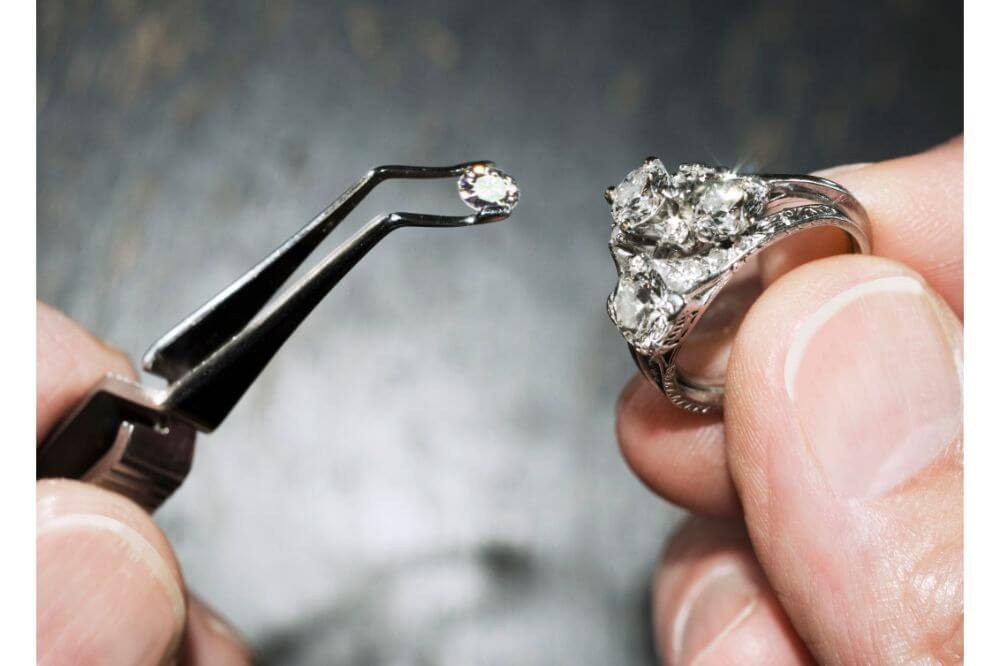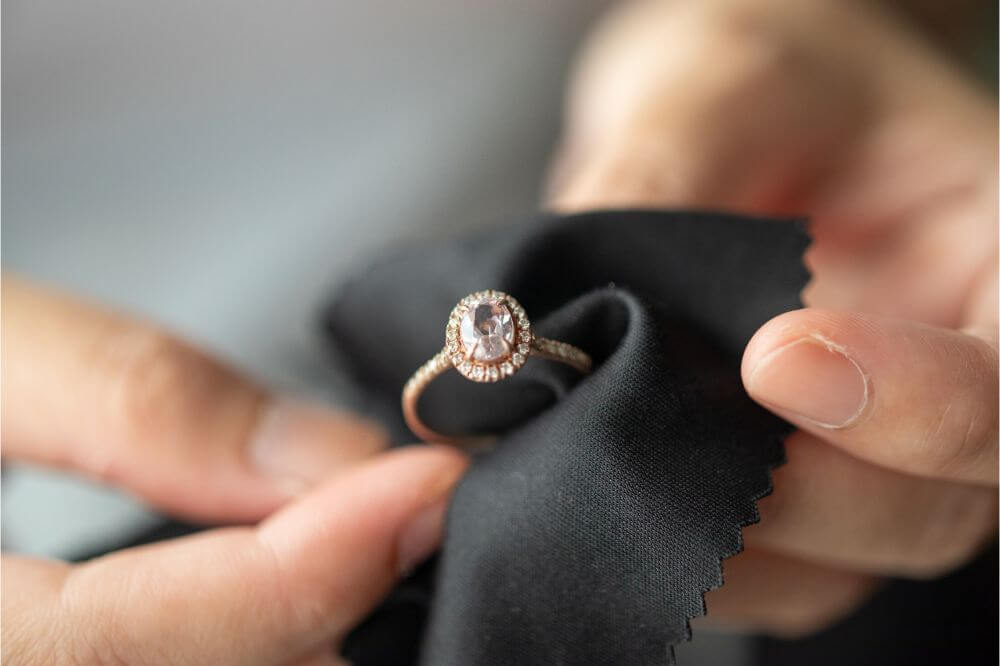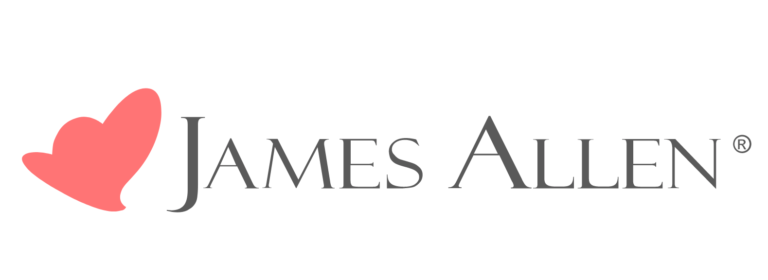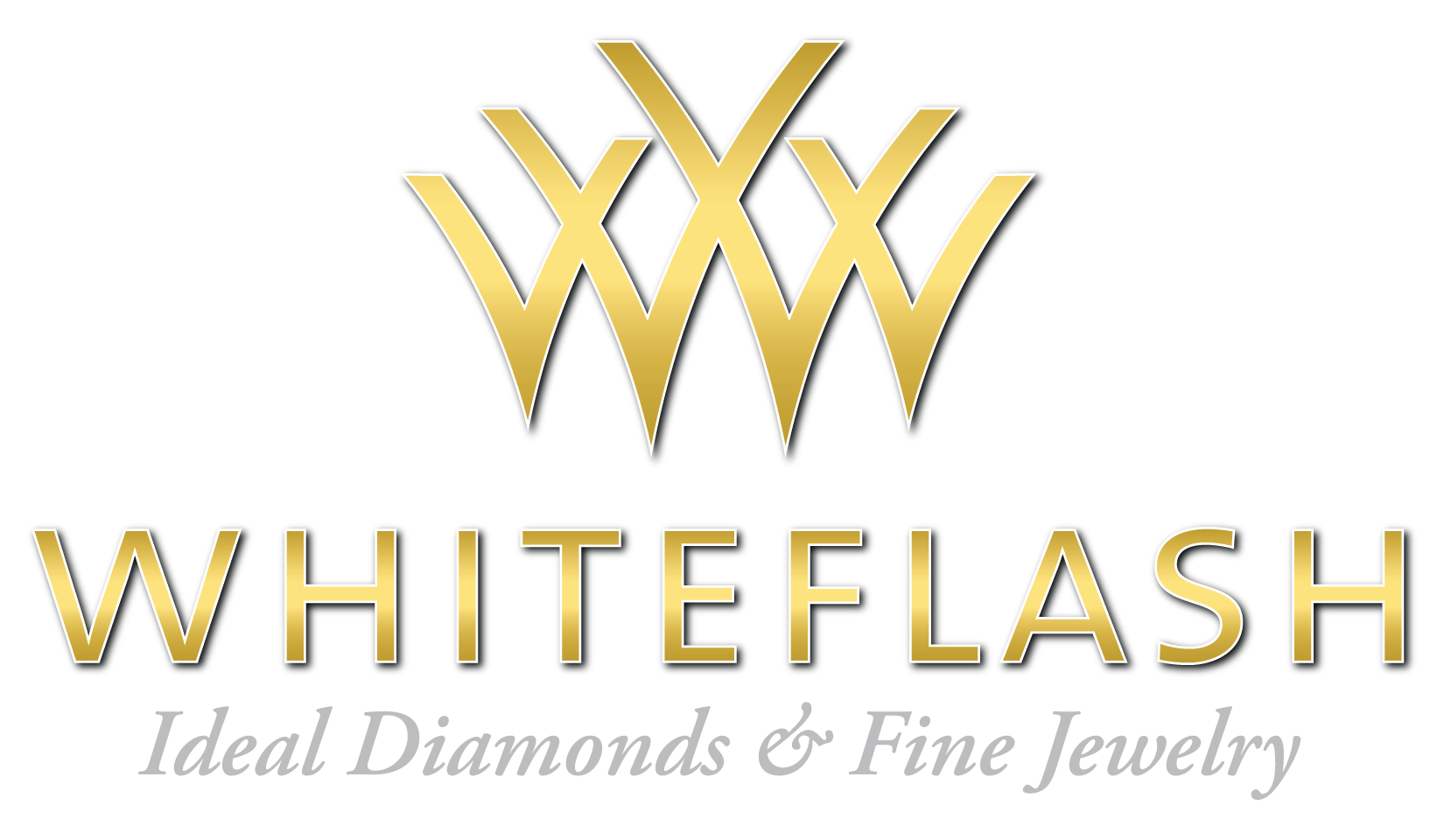If you are planning on buying a diamond ring of any kind, there are many considerations that you need to keep in mind. Of course, the quality and shape of the main stone, as well as the setting, need to be considered.
However, another aspect of your diamond ring that you may want to think about is the accent, otherwise known as diamond accents.
So, what is diamond accent and what purpose does it serve? Today, we’re going to figure out exactly what diamond accent is, what purpose it serves, how to choose one, what the different types are, how much you can expect to pay, and more.
What is Diamond Accent?
Diamond accents are the small stones that are put beside the centerpiece or main stone in a jewelry set, such as in a diamond ring. In other words, they are small diamonds that are put beside the larger diamond placed in the center of the setting.
As you might be able to gather by the name, a diamond accent is used mainly to highlight the center stone or to accentuate it. Diamond accents are not necessarily about looking good on their own, but about making the centerpiece look much better.
A diamond accent is designed to add character, style, and elegance to any piece of jewelry, as well as to increase the sparkle. Although there are many diamond rings and other jewelry setting that do not come with accents, most people would agree that a diamond accent does make the centerpiece look much better.
Keep in mind that a diamond accent can be chosen based on a variety of factors, including quality, color, shape, and size. It is important to note, however, that a diamond accent is a real diamond. These are not fake diamonds or costume jewelry.
Although they are of course much smaller than the centerpiece, and therefore worth substantially less, they are real diamonds. Moreover, they have all the characteristics of real diamonds and are also evaluated based on the four Cs (clarity, cut, color, and carat) that all diamonds are evaluated on.
Now that we know what a diamond accent is, let’s move on and figure out what the different types of them are.
The Different Types of Diamond Accent
There are a few different types of diamond accent out there. There are three main kinds of diamond accents that are generally used, which include small round diamonds, trillion cuts, and baguettes.
In some cases, emerald cut or princess cut diamonds might also be used, particularly in a three stone diamond ring setting, although this is not nearly as common as the first three.
So, let’s take a look at exactly what a small round cut diamond, a trillion, and a baguette accent are.
Small Round Diamond Accents
The most common type of diamond accent used is the small round diamond, and this also tends to be quite classy. If we are talking about three-stone diamond ring settings, channel settings, or pave settings, this is the most commonly used type of diamond accent.
What is interesting to note is that when this type of diamond accent is used in the channel setting, small round diamonds are placed in long rows that helps to create a lot of sparkle. Small round diamonds work especially well for a thick setting.
This is also a popular choice to be used in many different types of diamond ring settings, bracelets, and diamond necklaces. What is important to note is that these small round diamonds have the exact same number of facets as a normal round brilliant diamond.
There are three main types of small round diamond accent stones that exist. You have the stars, which have a carat weight less than 0.02, full cuts that have a carried weight anywhere between 0.02 and 0.07, and nearly diamonds, that have a carat weight anywhere between 0.08 and 0.18.
Baguette Diamond Accents
We then have baguette diamond accents, which are generally considered the preferred type of diamond accent, as they have a very classic feel and look, and are usually placed next to other baguette diamond accents that helps to create a long row of diamonds.
These diamond accents feature great symmetry and a large table, which is one of the reasons why they are preferred. Baguette diamond accents generally have step cuts, which help to provide great contrast with the centerpiece, and therefore really make the centerpiece stand out.
With that being said, being aware that baguette accents shouldn’t have the same amount of brilliance as a small round diamond or trillion cut accents. What is also important to note is that there are two main types of baguette diamond accents, which include tapered baguettes and straight baguettes.
Tapered baguettes have the shape of a rectangle with a tapered edge, and these are generally used to create an accent of the curves of a jewelry setting. Tapered baguette diamond accents are mostly used as flank stones in a three-stone setting or as side stones. We then have the straight baguette, which is more or less 100% rectangular.
These are generally placed adjacent to each other in rows or can be placed beside the center stone. This is a type of diamond accent that is generally used to accentuate a variety of center stone types, including marquise, round brilliant, and Asscher cut diamonds.
Trillion-Cut Diamond Accents
Here we have a popular type of diamond accent to use as flank stones. The trillion-cut diamond accent is most often used in a three-stone setting. They feature a very unique shape that helps to bring the attention of the eye to the center stone. The trillion-cut diamond has the form of the triangle and is all about following the natural curve of the ring itself. Most people would choose to use these with radiant cut, cushion cut, round brilliant cut, or princess cut diamonds.
Matching Diamond Accents to the Center Stone
One of the most important things to consider is how you are going to match your diamond accents to the rest of the setting. After all, the main point of any diamond accent is to highlight the centerpiece and to accentuate the actual stone in the center of the setting. Therefore, choosing the right type of accent is very important or else it might not make the center stone look as good as it otherwise could.
One of the main things to consider here is the color grade of the diamond. You never want your diamond accents to have a much higher color grade than the actual center stone, or else it’s going to make the center stone look comparatively bad. Therefore, the color grade of the diamond accents should be at least two, or even three grades lower than that of your center stone.
The same rule also applies to the clarity of your diamond accents. The clarity of the diamond accents should be at least two or even three grades lower than that of the center diamond. Yes, you do want it to be relatively clear, but you never want it to be clearer than the center stone.
Pricing of Diamond Accents
Generally speaking, just like the center stone diamond in your setting, diamond accents are usually always priced according to carat weight. However, because diamond accents are much smaller than normal diamonds used in settings, they are much cheaper.
What also needs to be said is that you really can’t buy diamond accents separately. These are bought in wholesale quantities by jewelers and are then used in the various settings. What is also important to note is that accent diamonds are graded in the same way as regular diamonds.
That said, because they aren’t meant to be the star of the show, you can buy much lower grades of diamond accents, and therefore save a bit of money. In general, you can expect to spend up to $400 per carat for accent diamonds, or up to $1000 if you are going for premium grade and quality.
On that note, most diamond accents will feature a carat weight between 0.02 and 0.18. A good rule of thumb is that if you have a side stone setting or a three-stone setting, the diamond accents should be no more than half the size of the main stone. At the same time, the diameter of those side accent stones should be equal to the center stone’s table.
However, if you are using a pave setting, then the accent stones should be no more than 1/6 the size of the main stone. Smaller accent diamonds always look better with this type of setting.
Diamond Accents – Final Thoughts
When purchasing diamond accents, you always need to consider the specific type or setting that your piece of jewelry features. Always consider the color, grade, clarity, and shape of the accent diamonds, especially in comparison to the main stone. If you do this, choosing the right type of diamond accents should not be a problem.





